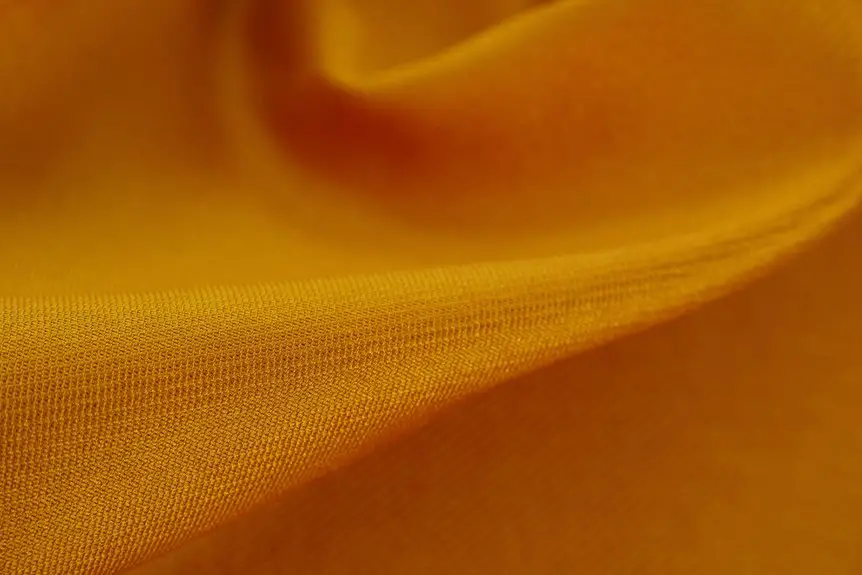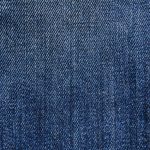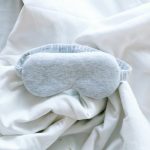Percale isn’t always 100% cotton—you can find it in blends like cotton-polyester, linen, or bamboo. While pure cotton percale feels crisp, breathable, and softens with use, blends offer extra durability and wrinkle resistance but may trap more heat. Your choice affects comfort, care, and texture, so knowing the fiber content helps you pick the best for your sleep needs. Keep exploring to understand how these fibers shape your bedding experience.
Table of Contents
Key Takeaways
- Percale refers to a weave pattern, not a specific fiber, so it is not always made from 100% cotton.
- While traditional percale is 100% cotton, blends with polyester, linen, or bamboo are common for added durability and wrinkle resistance.
- Cotton percale offers breathability and softness, whereas polyester blends improve strength but reduce natural airflow.
- Blended percale fabrics balance comfort and performance, often enhancing wrinkle resistance and faster drying times.
- Always check fiber content labels, as percale sheets can vary from pure cotton to mixed fiber constructions.
What Defines Percale Fabric?
Percale fabric is known for its crisp, cool feel and tight weave. When you touch percale, you’ll notice its smooth texture, which comes from the plain weave pattern—each thread crosses over one and under one. This structure gives percale its durability and matte finish.
You’ll find that percale fabrics typically have a thread count of at least 180, ensuring a dense but breathable material. While many percale sheets are made from 100% cotton, percale refers to the weave, not the fiber content.
You can find percale woven from cotton, polyester, or blends. So, when choosing percale, focus on the weave’s characteristics—crispness, breathability, and durability—rather than assuming it’s always pure cotton. This helps you pick the right fabric for your needs.
The History of Percale Sheets
Although you mightn’t realize it, the sheets you sleep on have a rich history that dates back centuries.
Percale fabric originated in India, known for its finely woven cotton textiles. When the fabric reached Europe in the 17th century, it quickly gained popularity for its crisp feel and durability.
Over time, percale became synonymous with quality bedding.
Here’s a quick look at percale’s history:
- Originated in India, with handwoven cotton fabrics
- Introduced to Europe through trade in the 1600s
- Became a symbol of luxury and fine craftsmanship
- Used in high-end bedding and apparel by the 18th century
- Continues to be favored for its cool, crisp texture
Now, you can appreciate the tradition behind your percale sheets.
Characteristics of 100% Cotton Percale
When you choose 100% cotton percale, you get a fabric that’s soft, breathable, and perfect for a comfortable night’s sleep.
It’s known for its durability and smooth, crisp texture that only improves with washing.
Plus, being a natural fiber, it offers benefits like moisture-wicking and hypoallergenic properties.
Softness and Breathability
Because 100% cotton percale is woven with a tight, plain weave, it feels crisp and smooth against your skin while remaining lightweight.
This weave enhances both softness and breathability, making percale sheets perfect for year-round comfort. You’ll notice how the fabric allows air to circulate freely, keeping you cool on warm nights and cozy without overheating when it’s cooler.
Here’s what you’ll appreciate about percale’s softness and breathability:
- Crisp, invigorating feel that softens over time
- Excellent airflow to regulate body temperature
- Lightweight texture that won’t weigh you down
- Moisture-wicking properties to keep you dry
- Ideal for people who tend to sleep hot
With percale, you get a breathable, soft fabric that keeps comfort high and sweat low.
Durability and Texture
You’ll find that 100% cotton percale stands out for its durability and distinctive texture, thanks to its tightly woven plain weave. This weave creates a crisp, matte finish that feels smooth against your skin while resisting wear and tear. The fabric’s strength means it holds up well to frequent washing without losing its shape or softness. Over time, percale maintains its fresh, cool feel, making it ideal for everyday use.
| Feature | Description | Benefit |
|---|---|---|
| Weave Type | Plain weave, tightly woven | Enhances durability |
| Texture | Crisp and matte | Feels smooth, resists pilling |
| Longevity | Strong fibers withstand washing | Retains shape and softness |
| Appearance | Matte finish | Maintains a clean, fresh look |
Natural Fiber Benefits
Beyond its durability and texture, 100% cotton percale offers natural fiber benefits that enhance your comfort and well-being.
When you choose cotton percale, you’re embracing a fabric that breathes and feels soft against your skin. You’ll notice it’s hypoallergenic, making it ideal if you’re sensitive to irritants.
Plus, cotton naturally absorbs moisture, keeping you cool and dry throughout the night. You’ll also appreciate how eco-friendly it is, as cotton is biodegradable and renewable.
Here are key benefits you get with 100% cotton percale:
- Breathable fabric that promotes airflow
- Hypoallergenic properties reduce allergies
- Excellent moisture absorption for comfort
- Durable yet lightweight for everyday use
- Environmentally friendly and sustainable choice
These features make cotton percale a smart, natural option for your bedding needs.
Common Fiber Blends in Percale Fabric
You’ll often find percale fabric made from cotton and polyester blends, which combine softness with durability.
There are also options that mix cotton with other natural fibers like linen or bamboo for added breathability.
Understanding these blends helps you choose the right balance of comfort and performance for your needs.
Cotton and Polyester Blends
Many percale fabrics combine cotton and polyester to balance comfort and durability. When you choose a blend, you get the softness of cotton with the wrinkle resistance and strength of polyester.
This combo makes sheets easier to care for and longer-lasting. You’ll notice these benefits:
- Improved wrinkle resistance
- Enhanced durability
- Faster drying times
- Lower shrinkage risk
- Cost-effective options
This blend suits you if you want low-maintenance bedding that still feels breathable.
However, it won’t be as naturally soft or moisture-wicking as 100% cotton percale. Knowing this helps you pick the right fabric for your needs without sacrificing comfort or practicality.
Natural Fiber Combinations
If you prefer natural fibers but still want some of the benefits blends offer, percale fabric often combines cotton with other natural materials like linen or bamboo. These blends enhance breathability, durability, and texture, giving you a comfortable yet resilient fabric. You get the softness of cotton with added moisture-wicking or cooling features from the other fibers. Here’s a quick look at common natural fiber combinations in percale:
| Fiber Blend | Key Benefit | Feel & Use |
|---|---|---|
| Cotton & Linen | Breathability | Crisp, cool; ideal for summer |
| Cotton & Bamboo | Moisture-wicking | Soft, silky; great for sensitive skin |
| Cotton & Hemp | Durability | Slightly textured; eco-friendly |
These blends keep percale fresh while maintaining its classic crispness.
Benefits of Cotton Percale Sheets
Although cotton percale sheets might seem simple, they offer remarkable benefits that can transform your sleep experience. Choosing cotton percale means you’re opting for breathability and durability that enhance comfort night after night.
Cotton percale sheets elevate your sleep with breathable, durable comfort every night.
These sheets keep you cool and fresh, making them ideal for warm climates or hot sleepers.
Here’s why you’ll love cotton percale sheets:
- Crisp, cool feel that improves sleep quality
- Lightweight yet strong fabric that lasts through washes
- Excellent moisture-wicking properties to keep sweat away
- Soft texture that gets better with each wash
- Hypoallergenic and gentle on sensitive skin
With cotton percale, you get a perfect blend of comfort and longevity that suits your everyday needs.
Pros and Cons of Polyester Blends in Percale
While cotton percale offers natural breathability, polyester blends in percale fabric bring their own set of advantages and drawbacks that you should consider.
On the plus side, polyester adds durability and wrinkle resistance, making your sheets easier to care for and longer-lasting. You won’t have to iron as often, and the blend dries faster, which is great if you want quick turnover.
However, polyester isn’t as breathable as cotton, so your sheets might trap more heat and moisture, potentially impacting comfort during warmer nights.
Also, polyester blends can feel less soft and natural compared to 100% cotton percale.
If you prioritize easy maintenance and durability, polyester blends could work well. But if breathability and natural feel top your list, you might want to stick with pure cotton percale.
How Linen or Bamboo Fibers Affect Percale
When you incorporate linen or bamboo fibers into percale fabric, you introduce unique qualities that can enhance your bedding experience.
These natural fibers bring breathability, softness, and durability that differ from traditional cotton percale. Linen adds a crisp texture and moisture-wicking ability, while bamboo offers a silky feel and antibacterial properties.
Here’s what you can expect:
- Linen fibers increase strength and become softer with each wash
- Bamboo fibers enhance moisture absorption, keeping you cool
- Both fibers improve eco-friendliness compared to synthetic blends
- Percale with linen feels lightweight but textured, perfect for hot sleepers
- Bamboo percale has a smooth finish and resists odors naturally
Choosing percale blended with linen or bamboo gives you an invigorating twist on classic cotton bedding.
Percale vs. Sateen: Fiber Differences
If you want to understand how percale and sateen differ, you need to look at the fibers they use and how those fibers are woven.
Percale typically uses cotton fibers, woven in a simple, tight one-over-one-under pattern that creates a matte finish and crisp feel.
Sateen also often uses cotton but employs a satin weave, where more threads float on the surface, giving it a smooth, lustrous appearance.
While both can be 100% cotton, sateen’s weave makes it feel silkier and softer, whereas percale feels cooler and more breathable.
Sometimes, sateen might blend in fibers like polyester for sheen, but percale usually sticks to natural fibers for that crisp texture.
Knowing these fiber and weave differences helps you choose the right fabric for your comfort needs.
Durability and Care for Different Percale Fibers
Because percale fabric comes in various fiber types, its durability and care requirements can differ considerably.
When you choose percale, understanding the fiber helps you maintain its crisp feel and longevity.
Cotton percale is breathable and soft but can shrink if washed in hot water. Polyester blends add strength and resist wrinkles, needing less ironing. Linen percale is strong yet prone to wrinkles and requires gentle washing.
Here’s a quick care guide for different percale fibers:
- Wash cotton percale in cold water to avoid shrinkage
- Use low heat drying for polyester blends to maintain fiber integrity
- Avoid bleach to protect fiber strength and color
- Iron linen percale while damp for easier smoothing
- Store in a cool, dry place to prevent mildew
Following these tips keeps your percale fabric fresh and durable.
How Fiber Content Influences Bedding Feel
Understanding the fiber content of your percale fabric doesn’t just help with care; it also shapes how your bedding feels against your skin. Different fibers offer distinct textures, breathability, and softness. For example, 100% cotton percale feels crisp and cool, while blends with polyester add durability but may reduce softness. Linen blends bring a breathable, natural texture, and cotton-silk mixes add a subtle sheen and smoothness. Knowing these differences helps you pick bedding that matches your comfort needs.
| Fiber Content | Feel Characteristics |
|---|---|
| 100% Cotton | Crisp, cool, breathable |
| Cotton-Polyester | Durable, wrinkle-resistant |
| Linen Blends | Textured, airy, natural |
| Cotton-Silk | Smooth, soft, slight sheen |
| Synthetic Blends | Less breathable, varied feel |
Choosing the Right Percale for Your Sleep Preferences
How do you know which percale fabric suits your sleep style best? It starts with understanding your preferences for texture, temperature, and durability.
Percale is versatile, but choosing the right blend makes a big difference. Consider these factors:
- Fiber type: Cotton feels soft and breathable; blends may add strength or wrinkle resistance.
- Weave tightness: Higher thread counts offer a smoother, denser feel.
- Finish: Some percale fabrics have special treatments for extra softness or cooling.
- Allergies: Hypoallergenic fibers help if you’re sensitive.
- Maintenance: Think about how often you want to wash and how the fabric holds up.
Frequently Asked Questions
Can Percale Fabric Be Used for Clothing Besides Bedding?
You can definitely use percale fabric for clothing besides bedding. Its crisp, breathable texture makes it great for shirts, dresses, and pajamas, giving you comfort and durability in your wardrobe beyond just sheets.
How Does Percale Fabric Impact Indoor Air Quality?
You’ll find percale fabric helps improve indoor air quality since it’s breathable and allows air circulation, reducing moisture and allergens. Just make sure it’s made from natural fibers to avoid synthetic chemicals that might affect air quality negatively.
Are Percale Sheets Environmentally Sustainable?
You can find percale sheets made from sustainable fibers, but not all are eco-friendly. Look for organic cotton or recycled materials to guarantee your percale sheets support environmental sustainability and reduce your ecological footprint effectively.
What Are the Best Washing Detergents for Percale Sheets?
You’ll want to use a gentle, liquid detergent without bleach or fabric softeners to keep your percale sheets crisp and soft. Look for eco-friendly options with plant-based ingredients to protect fibers and maintain fabric quality.
Do Percale Sheets Cause Allergies or Skin Irritation?
Percale sheets usually don’t cause allergies or skin irritation, especially if you choose natural fibers like cotton. However, if you’re sensitive to certain dyes or finishes, washing them before use can help reduce any reactions.
- Are Percale Sheets Good? A Review of Their Pros and Cons - July 14, 2025
- What Is Percale Egyptian Cotton? A Premium Bedding Combination Explained - July 14, 2025
- Is Percale a Type of Egyptian Cotton? Unraveling the Terms - July 14, 2025







